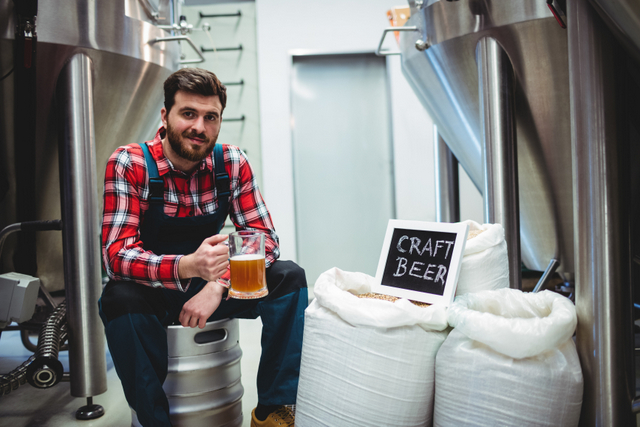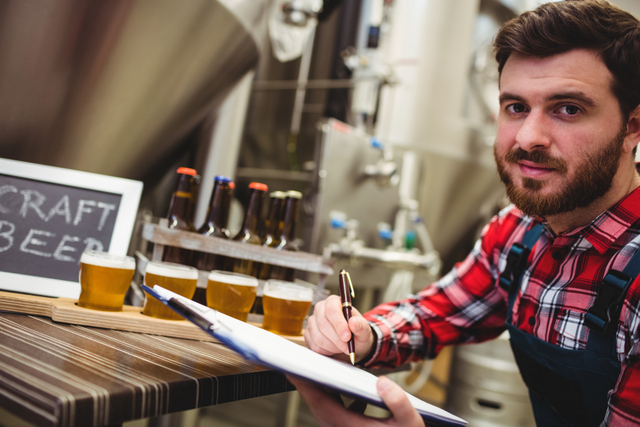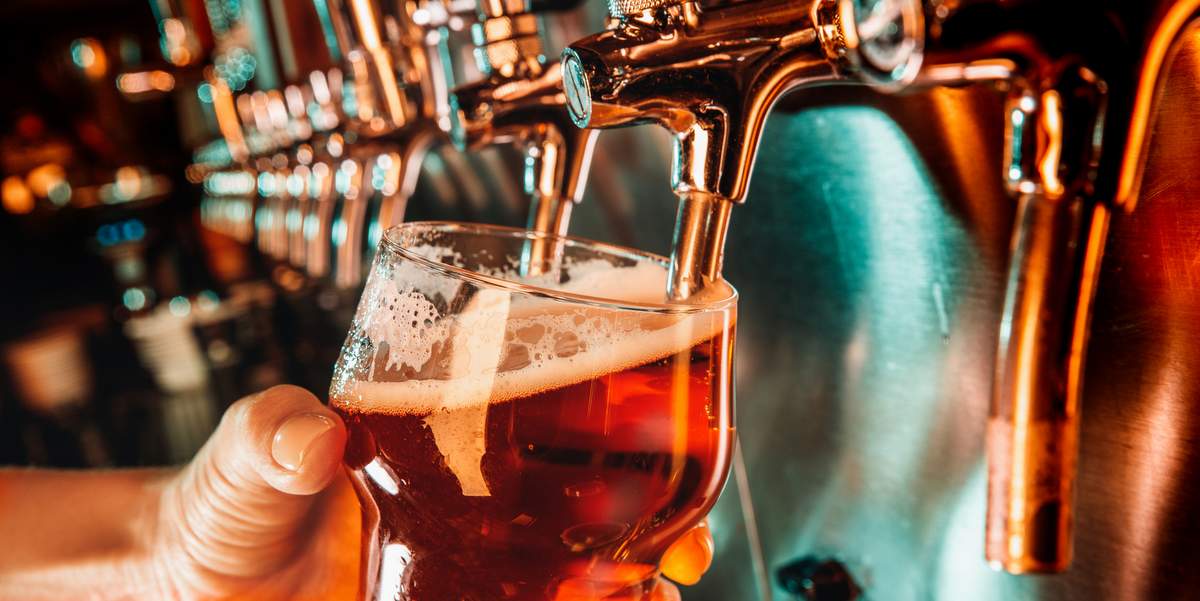
Amidst all the political rhetoric about America’s overall economic condition, there’s one undeniable truth: The last several years have been good for owners of brewery, distillery or winery businesses. For that reason, this may be the right time to consider putting an alcohol-beverage company on the market. Some might say, hey, that’s selling out man, but hey, you owe it to yourself to explore all your options.
So, how are distinct niches of the alcoholic beverage marketplace doing? Let’s take a closer look:
Wine. Through November, domestic wine sales through all channels were up 4 percent to approximately $40 billion, led by direct-to-consumer shipments that spiked 19 percent during this period. Overall, U.S. wine sales have increased an average of 2 percent annually since 2010, and the average price of table wine has risen from $8 per bottle in 2010 to $9.33 through last year.
The good news in the wine sector? The up-and-coming Millennial generation (ages 18 to 34), which accounted for 36 percent of all wine sales in 2015. That group has contributed to sales increases for higher-margin premium wine brands, and Millennials are also more willing to try new options. In fact, 19 percent reported buying 10 or more wine brands in the past year. Obviously, this bodes well for future sales and consumption trends.
Spirits. Domestic sales of distilled spirits rose a solid 4.1 percent through 2015, marking the sixth consecutive year that niche has increased market share relative to beer in the overall U.S. alcoholic beverages sector. The American whiskey category did particularly well, with bourbon, rye and Tennessee variety sales up an aggregate 7.8 percent last year. Like the wine sector, Millennials are helping drive a revival of “cocktail culture,” which is fueling increased sales of flavored whiskeys and other spiced spirits. In addition, industry surveys show that younger consumers are also embracing premium tequila brands as a drink of choice.
Beer. Craft breweries have been the engine driving the beer sector in recent years, with year-over-year domestic consumption of those specialty brews up 15.1 percent in 2015. At the same time, the number of craft breweries rose 19 percent last year, causing some industry concern about how long the aggressive growth pattern can continue.
However, there are at least two mitigating factors that can help ease concerns about future prospects in the craft beer niche. First, 52 percent of craft beer devotees in a recent Nielson survey said choosing a brew that was “locally made” was an important purchase consideration, which signals more potential value for well-run local and regional breweries. And, like distilled spirits, flavors and brew variants are the up-and-coming beer rage for younger consumers. For example, recent surveys show that women between 22-34 have the strongest preference for flavored beers, which helps underscore why 27 percent of new craft products introduced in 2015 contained some added taste elements.
Favorable economic, investor and consumer trends
Since the Great Recession, the domestic economy has produced steady growth, with a number of favorable trends that bode well for the alcoholic beverage sector. These include:
Low interest rates. Until a pair of quarter-point interest rate hikes in late 2015 and late 2016, the Federal Reserve had maintained a near-zero interest rate policy on its overnight borrowing rate. Despite that slight increase, small business borrowing costs remain favorable and should remain so in the near term, even if future Fed rate hikes occur.
Booming private equity and corporate investments. In recent years, private equity investments in high-quality businesses have risen steadily, reaching $2.4 trillion in 2015. Within that sector, consumer packaged goods has been a hot market, as total private investments to acquire or purchase stakes in those companies jumped nearly eight-fold, from a mere $442 million in 2011 to $3.34 billion in 2015. During that period, over 60 percent of total consumer goods M&A activity took place in the food and beverage segment, with Anheuser-Busch InBev purchasing or taking investment stakes in 15 alcohol beverage companies over just a two-year period. Similarly, presenters at a recent wine industry conference noted that several major players (such as Constellation Wines and Gallo) continue to look for premium wineries to complement and expand their portfolios. That level of interest from corporate and private equity buyers, which when coupled with approximately $50 trillion in cash sitting on the sidelines, means significant M&A activity is likely to continue into 2017.
Rising equity markets. While many observers thought an aging bull market for U.S. equities might be slowed by the surprising election of president-elect Donald Trump and the Fed’s move to hike short-term interest rates, neither prediction has come to pass. In fact, 2016 ended with the S&P 500 index up 9.5 percent, the NASDAQ up 7.5 percent and the bellwether Dow Jones index up 13.4 percent. In early January, the Dow was nearing the 20,000 mark, which would be an all-high high for that index. Overall, the “wealth effect” of this continued strength in equity markets provides strong confidence to potential buyers, who may wish to leverage some personal assets into the purchase of a brewery, distillery or winery.
Strong consumer confidence. In December, the Conference Board Consumer Confidence Index measure of forward-looking expectations hit a 13-year high, which was attributed to a “post-election surge in optimism for the economy, jobs and income prospects.” This well-regarded measure also found that a higher percentage of consumers believe job market and short-term business conditions are improving, both of which correlate to more favorable consumer spending behavior. In addition, demand for premium goods continues to rise, particularly among Millennials, who were less likely than any other generational group in a recent Nielsen survey to say they would purchase mass-market alcoholic beverages.
Retiring Baby Boomers. The leading edge of Baby Boomers, born from 1946 through 1964, are well into traditional retirement age, meaning that many long-time owners of alcohol-based businesses are at or near the point of deciding who should take over their companies. In fact, BizBuySell.com, an online business marketplace, reported that small business for sale listings reached a six-year high in 2015, with median closed sales prices rising 12 percent over the previous year. In addition to this demographic trend, many older business owners that suffered heavy losses during the Great Recession were forced to delay retiring by several years as they built their businesses back to profitability. That translates to pent-up sales demand, in which these business owners are searching for a match with the right buyer.
That activity has helped drive EBITDA multiples in the alcohol sector up in the mid to high teens for many acquisitions, if not higher in some instances (e.g. Constellation’s acquisition of Ballast Point). Larger breweries and investment firms continue to purchase local and regional craft operators to protect and expand market share, with Brewbound reporting at least 24 such acquisitions in 2015. That activity is driving higher brewery multiples as well, although M&A activity and valuations have recently plateaued.
Key sell-side considerations

While it’s clear that market conditions in the alcoholic beverage sector are favorable for a profitable transaction, sellers still need to be aware of common accounting and reporting issues that can devalue — or derail — a prospective deal. These include:
Not maximizing reported EBITDA. While prospective buyers want the most accurate earnings before interest, taxes, depreciation and amortization (EBITDA) possible to avoid overpaying for a business, sellers also must take care to identify and include all appropriate add-backs. These may include valuing inventory at FIFO (first in, first out) rather than LIFO (last in, first out) and revising owner or family compensation rates to fair-market value. Other common EBITDA boosters include removing charitable contributions, personal expenses, significant repair or maintenance bills, employee severance and any one-time legal fees. Sellers that do not pay attention to these steps can leave a lot of money on the table, particularly with the high EBITDA multiples currently being paid for alcohol businesses.
Verifying that all appropriate taxes are filed (or reported). The beverage industry is especially prone to IRS red flags when it comes to income, sales and use taxes. For example, some small or entrepreneurial firms will pay suppliers in cash. Those suppliers, in turn, may not record such transactions for tax reporting purposes. If a prospective buyer’s due diligence process uncovers sloppy record-keeping or open questions about tax reporting, it may lower the perceived value of the deal — or kill it altogether.
Ensuring timely delivery of requested information. When business owners try to run their brewing, distilling or winery company — while also handling the details of a prospective deal — the net result is often negative on both fronts. For example, potential buyers often make short notice requests of sellers regarding complex details on accounting, financial, IT, legal and staffing operations. If the seller cannot provide the proper detail in a timely fashion, it raises the odds that a suitor may look elsewhere.
Preventing last-minute surprises. When a business owner finally decides to sell the liquor business they have successfully built, they shouldn’t need to worry about last-minute surprises that could be avoided with proper planning. A skilled financial consultant can be a valuable resource in this area, serving as an effective checkpoint to identify and resolve tax, valuation or other deal issues before they become a problem. Ultimately, this can lead to a higher sale price, lower deal preparation costs or both.
In the current market environment, selling a liquor business can be a highly profitable decision. For more details on how to maximize what could be a time-sensitive opportunity, contact Derek Groff, director of Valuation Services at [email protected] or 303-294-7732.





[…] beer matter for a brewery to be successful? I quickly replied yes. Amid a few replies and forth Bryan recommended I read this article. I did. For my non-business type brain, I gathered what the article says is if you are planning […]